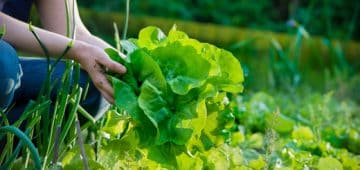
Exam question from R2113 Understanding the production of outdoor vegetables and fruit. RHS Level 2.
List FIVE factors to be considered when selecting a site for outdoor food production. For EACH factor, state TWO ways in which cropping is affected by completing the table below. (10 marks)
Answer
Factors listed by the examiners include:
Soil depth – i) important for carrots and parsnips which have long tap roots; ii) enables good root establishment of fruit trees and bushes.
Soil texture: i) sandy soil warms up quickly so crops have an early start in the growing season; ii) clay soils tend to be cold which means a slow start t the growing season. They are not suitable for root crops because they may restrict root growth, but they are nutrient rich.
Soil pH: i) a soil with a pH of 5.5 – 6.5 is acid and ideal for crops such as blueberries. ii) A soil with a pH of 7.0 – 7.5 is alkaline and ideal for brassicas.
Frost: i) Avoid planting crops in a frost pocket (for example in a dip) as this may damage crops. ii) Avoid planting fruit trees and bushes in frost prone sites as blossom/fruitlets are prone to damage.
Wind: i) even light winds can reduce crop yields by 20 – 30%; ii) wind can cause physical damage to crops, e.g. fruit trees.
Examples of other factors that could be mentioned here include:
Aspect: i) A south-facing slope warms quickly and allows crops to get an early start to the growing season. Most fruit and vegetables thrive in a sunny position. ii) Avoid a steeply sloping site if possible as this may be both difficult to work and susceptible to soil erosion.
Shelter: i) Select an open but sheltered site if possible to ensure crops receive plenty of sunlight. ii) Avoid sites with avoiding overhanging trees or tall hedges, and sites overshadowed by buildings for much of the day.
Accessibility: i) An accessible site is one that is easy to reach with wheelbarrows and other equipment. ii) A good location will also be easy to reach with a hose or not too far from an outdoor water source.
Protection: i) It is important to select a site that is sheltered from the wind – especially when growing tall crops and those requiring support. ii) Individual crops can be protected from bad weather using a variety of methods, including cloches, low tunnels and fleece.

